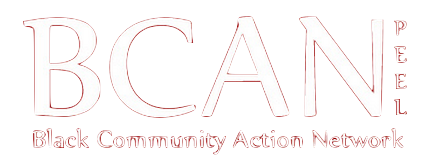F.A.C.E.S. Report
F.A.C.E.S. Full Summary Report: Facilitating Access, Change and Equity in Systems – examines the social well-being of Black youth in Peel Region and the supports needed to ensure the opportunity to thrive. The research presented is a compilation of demographic and socio-economic data as well as key interviews with service providers and Black youth themselves.
Report 1: Fighting an Uphill Battle: This report is about the social well-being of Black youth in Peel Region and the supports they need in order to improve their quality of life and achieve their aspirations. It was commissioned in 2014 by F.A.C.E.S. of Peel (Facilitating Access, Change and Equity in Systems) - a collective made up of organizations and individuals who strive to improve the state of equity and inclusion in Peel’s human services sector, with a major emphasis on racialized and marginalized groups, especially Black youth. The information in the report – mostly qualitative and perception data - was collected from consultations with Black youth, adult Black residents, service providers and key informants in Peel Region (a total of 103 respondents). The findings and recommendations are based on the acknowledgment of systemic anti-Black racism in Canada and are focused on issues of equity and inclusion in the Peel community, with emphasis on the educational system, employment and poverty, the Police and community-based services in Peel Region. The main audiences for this report and its recommendations are service providers, funders of public and social services, Black youth, and community leaders in the Black community.
Report 2: A Socio-Economic Profile of the Black Population in Peel, 2006 & 2011: As of 2011, there were 116,265 Black people living in Peel Region (a growth of 21.8% since 2006). This report provides an overview of selected demographic and socio-economic characteristics of the Black population in Peel. The information provided may be useful for determining priorities for social services and community development for the Black community in Peel Region as a whole and within specific Peel municipalities.
Report 3: Socio‐Economic Status of the Black Population by Peel Neighbourhoods, 2006: Many studies on how to improve the quality of life of citizens recommend focusing public policy and social programs on where people actually live: local neighbourhoods. This paper provides a preliminary comparative analysis of the socio-economic status of the Black population across neighbourhoods in Peel Region. Thirty-one (31) neighbourhoods in Peel are included in this study. The focus of analysis is on three areas of socio-economic status: education, employment, and income. A total of twelve (12) social indicators related to these three areas of socio-economic status are chosen for analysis. The taxonomic method is used to measure and analyze variations among the neighbourhoods with respect to the socio-economic status of Blacks in Peel. The findings of this research reveal many differences among Blacks in Peel both within and among neighbourhoods, with the neighbourhood of Urban Caledon (L7C) having the highest percentage of Blacks of high socio-economic status, and that of East Brampton (L6T) having the highest percentage of Blacks of low socio-economic status. The findings of this study can be used to inform the development of public policy and the provision of services for the Black community.
Report 4: An Inventory of Agencies that Serve the Black Community and Youth in Peel Region: Number of Black-focused Organizations in Peel Region
Fourteen (14) Black-focused organizations in Peel Region.
Three (3) mainstream agencies offering specific services for the Black community (for Black seniors).
Four (4) agencies in Toronto serving the Black population in Peel. (mental health, HIV/AIDS prevention, youth in the criminal justice system)
